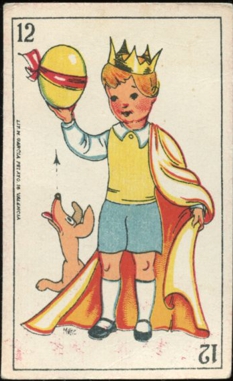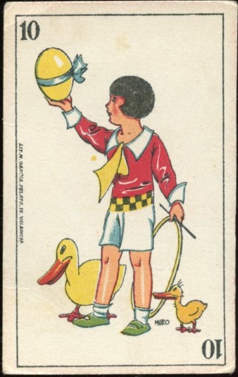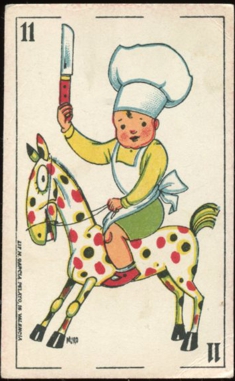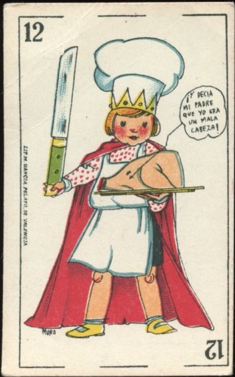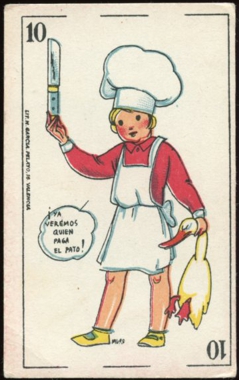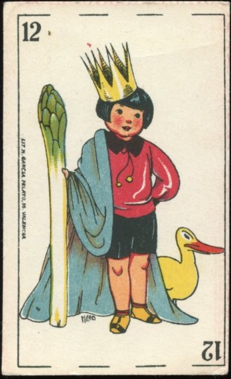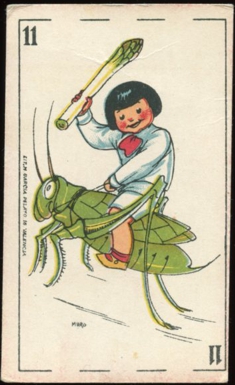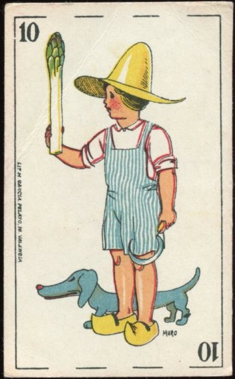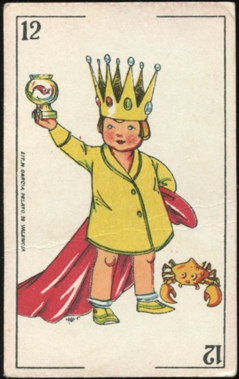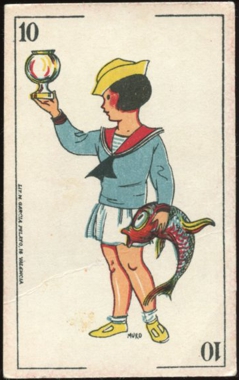October
2022
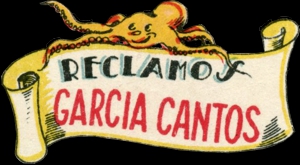 |
This
month a busy social life ruled my agenda. Lunches and dinners at or with
friends. I hardly had to cook a meal here at home. An unwilling shoulder
needed quite a lot of appointments with a physiotherapist and of course
my immune-therapy is still going on. I'm halfway now.
So, no time to find a new deck for this spot. |
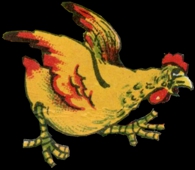 |
Last
month a last minute buy at the IPCS convention in Madrid was chosen for this
spot and now I chose one of the runners up from the convention. In fact it was
the first deck that I picked up from one of the Spanish collectors. A day later
I bought 3 more decks from an other Spanish collector. What the 4 decks had in
common was that they all were published as single, collectible cards, that were
gifts with certain products, often with chocolate bars. Hence this type of cards
is also referred to as "chocolate cards". They almost always have
advertising on the backs, as said often for chocolate manufacturers, but also
for other products. All these Spanish decks are dated 1920's and 1930's, which
made me believe that the idea of collectible playing cards was at least inspired
by the French chocolate cards, which were already published a decade earlier.
These
Spanish decks were aimed at children and young adults. This deck here was obviously
made for young children. You could say that the style and figures define the age
of the children it was made for. Although I'm much, much older, I still like the
style. And I always appreciate the presence of different animals in older decks
for children (see September 2021).
The deck was illustrated by Juan Pérez del Muro (Mexico 1895 - Barcelona 1949),
who had settled in Spain in 1919 and became a well known illustrator there. Juan
Pérez del Muro has illustrated the Baraja Infantil deck in the 1930's and this
Baraja Zoologica deck also dates from that decade. It was printed by Lit. M.
Garcia from Valencia and published by Reclamos Garcia Cantos as an advertising
deck for Calzados Segarra. This company has made shoes (calzados) and boots in
Vall de Uxo since 1882 and is still active. Their shoes were produced with the
Goodyear stitching (cosido) system and apparently the company had a shop in
Madrid in the Callao district.
|

|
Click
the first ace to see the pip cards of all the suits. |
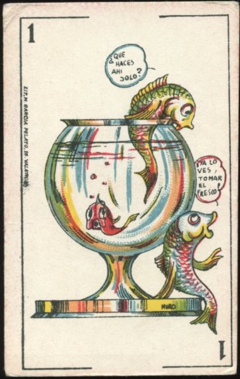
|
|
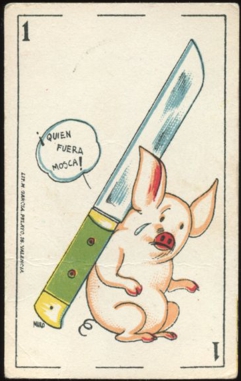
|
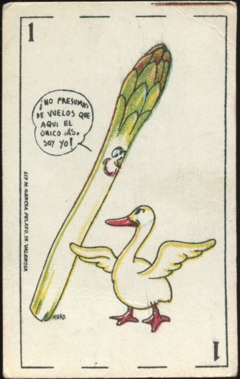
|
The deck consists of 40 cards,
numbered randomly on the backs.
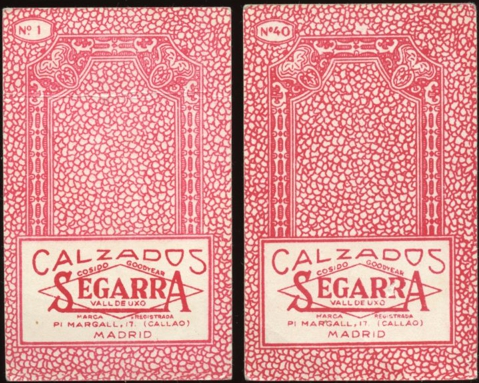
BACK TO PRESENT
MONTH


